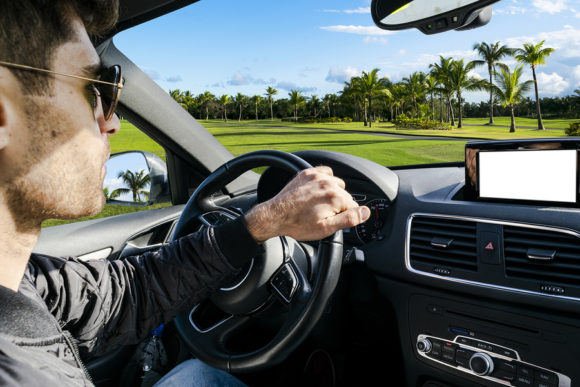New research suggests that drivers who use hands-free electronic devices, as opposed to handheld ones, are not increasing their risk of getting into a crash.
According to the research from Virginia Tech Transportation Institute, with hands-free technology, drivers can make calls and perform a variety of other tasks while still keeping their hands on the wheel and eyes on the road.
“Any activity that places either visual or manual demands on the driver — texting, browsing or dialing a hand-held phone, for instance — substantially increases crash risk. However, our recent study has found that the primarily cognitive secondary task of talking on a hands-free device does not appear to have any detrimental effects,” said Tom Dingus, the principal investigator of the study.
The researchers sought to determine the extent to which crash risk could be affected by primarily mental behaviors, known as cognitive distractions. Cognitive distractions occupy the mind but do not require the driver to look away from the road or remove his or her hands from the wheel. Examples include interacting with a passenger, singing in the car, talking on a hands-free cellphone, and dialing on a hands-free phone via voice-activated software.
Dingus and the research team analyzed video footage of 3,454 drivers, 905 crashes and 19,732 control periods of “normal driving” for instances of cognitive distraction. For comparison, they also studied examples of drivers performing visual and manual activities, such as texting on a hand-held phone or adjusting the radio.
They used video and other sensor data from the Second Strategic Highway Research Program naturalistic driving study, the largest light-vehicle study of its kind ever conducted.
Drivers who used a hand-held phone increased their crash risk by 2 to 3.5 times compared to model drivers, defined as being alert, attentive and sober. When a combination of cognitive secondary tasks was observed, the crash risk also went up, although not to nearly the same degree. In some cases, hands-free cell phone use was associated with a lower crash rate than the control group. None of the 275 more serious property damage and injury crashes analyzed were associated with the use of hands-free systems.
“There are a number of reasons why using a hands-free device could keep drivers more engaged and focused in certain situations,” said Dingus. “One is that the driver looks forward more during the conversation. Although engaging in the conversation could cause a small amount of delay in cognitive processing, the driver is still more likely to be looking in the direction of a precipitating event, such as another car stopping or darting in front suddenly. The phone conversation could also serve as a countermeasure to fatigue on longer road trips. Perhaps most importantly, a driver who is talking on a hands-free phone is less likely to engage in manual texting/browsing/dialing and other much higher-risk behaviors.”
He said VTTI’s research has shown consistently that activities requiring a driver to take his or her eyes off of the forward roadway, such as texting or dialing on a handheld phone, pose the greatest risk.
Topics Personal Auto
Was this article valuable?
Here are more articles you may enjoy.



 DoorDash, Uber Cost Drivers $550 Million in Tips, NYC Says
DoorDash, Uber Cost Drivers $550 Million in Tips, NYC Says  Florida OIR Triples the Size of Citizens’ Rate Decrease
Florida OIR Triples the Size of Citizens’ Rate Decrease  Zurich Makes £7.7 Billion Bid for Specialty Insurer Beazley
Zurich Makes £7.7 Billion Bid for Specialty Insurer Beazley  SIAA Announces Strategic Partnership With Progressive
SIAA Announces Strategic Partnership With Progressive 


